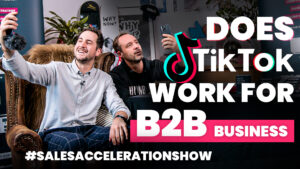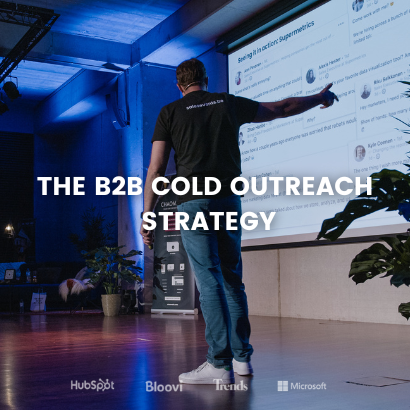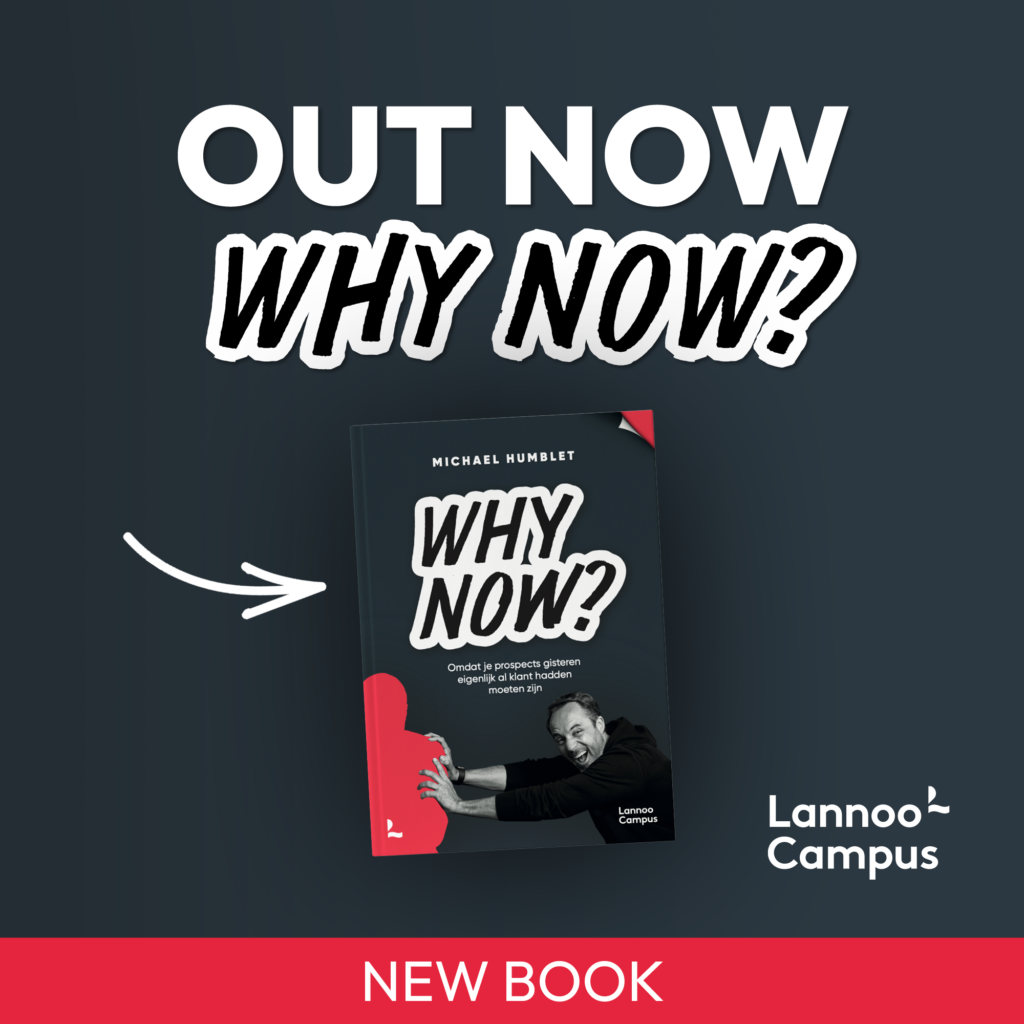As our prospects have evolved it is time to evolve our sales strategy and tactics. A question
that always returns is how to do sales outreach towards our B2B prospects. Read all about
my B2B cold sales outreach strategy based on 4 steps.
1. Define your dream customer
I’m always amazed when I ask my customers to describe their dream customer. Very hardly
they can answer this question straight away. This is key for scale and key for knowing where
to aim your sales prospecting machine. Let’s define this dream customer as it has a few
components:
- You need a vertical. Ex. Nonfood retail. Reason why I like to work with verticals is
because you can include them in the title of your prospecting material. This way your
content is more relevant for them. - Add a geographic component. In Europe where languages matter, I would strongly
recommend making it in the relevant languages. So, let’s go for nonfood companies
in Flanders. - Add a title. You can search on titles in LinkedIn and on other social media channels.
But you’ll need somewhere around 20 to 25 titles as people make up variances of
them. VP of sales, Sales director, Sales Manager, SVP of sales, etc.they’re all
variances of the same job function. - Never forget the richness is in the niches. I will always recommend at first to narrow
it down to 100 – 150 people maximum. This way when you start you can still do it
manually. Once you go above, you’re in a numbers game but hang on first get your
act together before you scale your outreach.
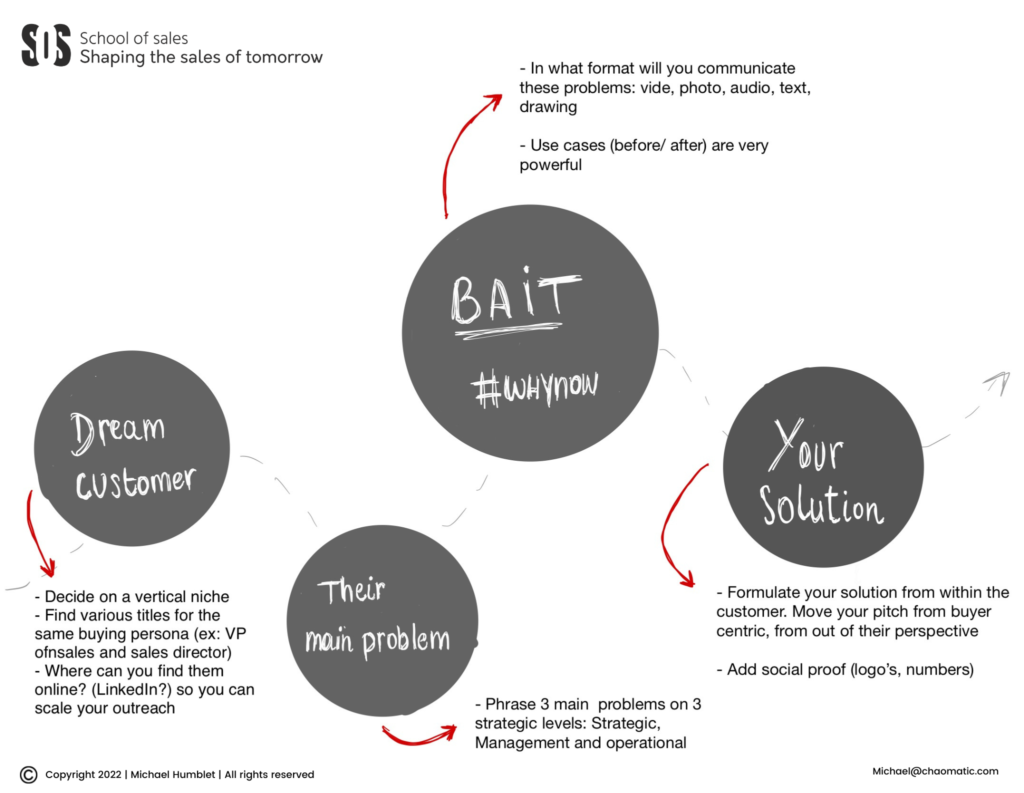
2. Prospects are looking for problems
Most companies talk about their solution, the what, the how, in rare cases the why. But
prospect will not only look for solutions in most cases they are looking for the problem as they don’t know the solution yet. You need to focus on their problems and if they struggling
they will recognize them immediately.
I would advise to come up with 3 types of problems: a very strategic (how will the market
evolve, what about disruptive new trends), a management issue (a mix between strategic
and operational, think in a timeframe of 6 months) and a very operational one (I have a
problem NOW, how do I solve it today). By leveraging these 2 to 3 problems you will always
hit a nerve. Don’t forget most of the time you don’t know what will work and part of your
sales qualification is trying to figure out what is the big pain that people will act upon. So I
layer my problems.
3. Bait: go fishing with valuable content
What you create as bait those fish will come to try and eat it. In simple terms, if you create
technical content, technical prospects will come to you. A lot of sales are not aware of this.
Let me take this a step further. If you only talk about your solution than only people will
come to you that understand and know exactly what they are looking for. Which is a very
limited market. The impact is that you are compared to your competition. Which is not an
ideal spot. You need to get earlier in that buying journey. This implies that you need to
create a different type of content that educates about the problem. Or that inspires how
others have this problem and how they solved it (this is called use-cases). Once you have
decided what content you will make based on their problems you’ll need to decide on what
format to produce: audio, video, written, pictures, cartoon, a framework
I wrote a book called Nobody Knows You how explaining how this works. Here is the part of my book launch video where I show and explain these content types in more detail:
We all love shortcuts. That is why you are reading this content piece in the first place.
Creating material that offers shortcuts to those problems is the key for being relevant in the
first place.
4. Your solution
Once you have run through steps 1 to 3, you’re ready to start distributing your content. Just
make sure that the content you make is visually very attractive. This way it increases their
attention (as it is relevant to them) and Trust to read/watch it. When you start distributing
this type of attractive content geared on the problem it is obvious that you or your company
can solve it. That you have a solution for it. But you do not need to say it in each and every
piece of content (stop being so salesy, you need to do it smarter). Explain the problem,
show it how they can solve (implying they need you).
Next up is to reach out with this content to your list of prospects defined in step 1.
Remember that it will take an average of 5 contact points before you can reach somebody
that you have never met. An example of a flow (they call this a sales cadence) can be found
here:
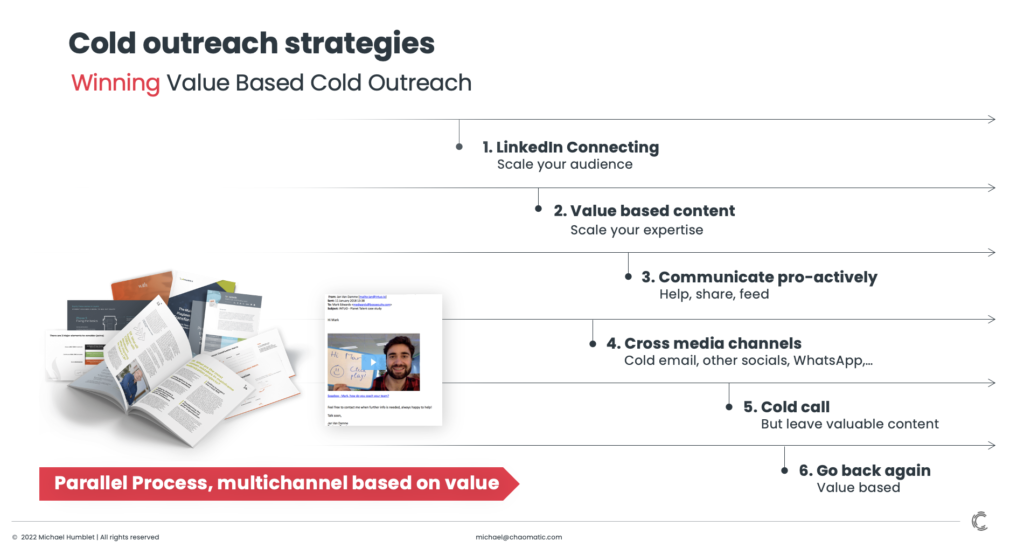
Michael Humblet is obsessed with designing, building, training and scaling sales machines and founder of Chaomatic and School of Sales , focused on accelerating revenue growth. Michael is the author of Nobody Knows You. The book that explains how to fix the most basic issue to scale your growth. He is also the host of The Sales Acceleration Show, a sales and marketing focused Q&A show on how to accelerate your business.
Michael Humblet


